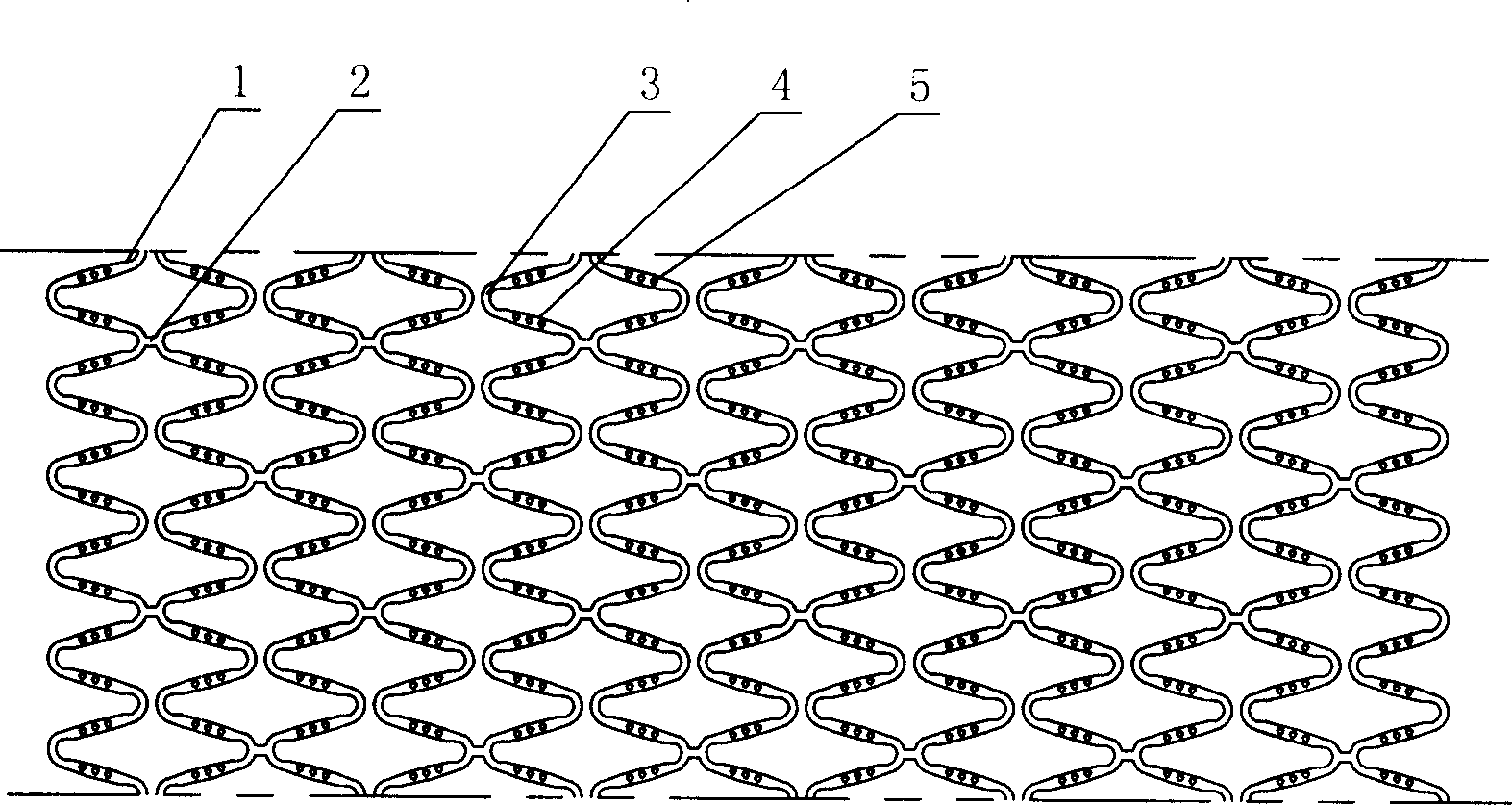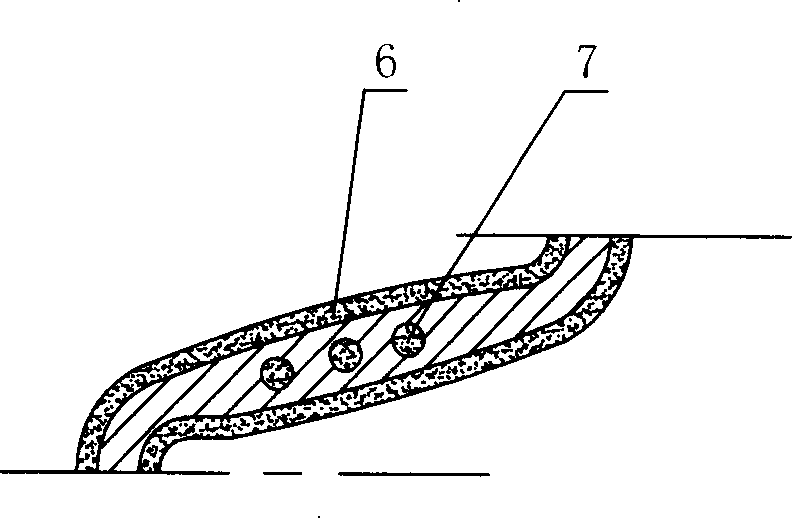Double medicament controlled-release coating micropore ACS bracket
A dual-drug and coating technology, applied in the field of medical materials, can solve the problems of limited amount of applied drugs, short time, and inability to achieve therapeutic effects, and can inhibit smooth muscle proliferation, promote healing, and improve drug release rate and directionality. the effect of the control
- Summary
- Abstract
- Description
- Claims
- Application Information
AI Technical Summary
Problems solved by technology
Method used
Image
Examples
Embodiment 1
[0023] The drug of the outer drug sustained-release coating of the coronary stent double-drug sustained-release coating adopts rapamycin (paclitaxel can also be used, the principle of action of the two is basically the same, and the present embodiment and the following embodiments use rapamycin prime as an example). The inner drug sustained-release coating is made of chloroform propionate, the outer drug sustained-release coating is made on the surface of the metal main component and connecting rod by ultrasonic atomization spraying process, and the inner drug sustained-release coating is filled in the serpentine In the multiple micropores on the section, the molar ratio n(dl-LA) / n(GA) of the polymer carrier polylactic acid-glycolic acid (PLGA) used is 80 / 20, the molecular weight is 200000, and the polymer The weight ratio of carrier to rapamycin and clobes propionate is 7:1.
[0024] The aforementioned rapamycin and clobes propionate are interchangeable.
Embodiment 2
[0026] In the coronary stent double-drug sustained-release coating, rapamycin is used for the drug sustained-release coating in the outer layer, pimecrolimus is used for the drug sustained-release coating in the inner layer, and direct coating is used for the drug sustained-release coating in the outer layer. The process is made on the surface of the metal main component and the connecting rod, and the inner layer of drug sustained-release coating is filled in multiple micropores on the serpentine section. The polymer carrier used is poly-n-butyl methacrylate (PBMA). The molar ratio n(dl-LA) / n(GA) is 90 / 10-50 / 50, and the molecular weight is 5000-400000. The weight ratio of the polymer carrier to rapamycin and pimecrolimus is 3:1.
[0027] The aforementioned rapamycin and pimecrolimus are interchangeable.
Embodiment 3
[0029] The drug sustained-release coating of the coronary stent double-drug sustained-release coating uses rapamycin as the drug in the outer layer of the sustained-release drug coating, ester glycol as the drug in the drug sustained-release coating in the inner layer, and an air spray process for the drug sustained-release coating in the outer layer. On the surface of the metal main body component and the connecting rod, the inner drug slow-release coating is filled in a plurality of micropores on the serpentine section, and the molar ratio of the polymer carrier polylactic acid-glycolic acid (PLGA) used is n (dl-LA) / n(GA) was 50 / 50, the molecular weight was 400,000, and the weight ratio of polymer carrier to rapamycin and ester diol was 10:1.
[0030] The rapamycin and ester diols mentioned above are interchangeable.
[0031] The technical principle of the present invention: the dual-drug slow-release coating of the coronary stent uses an innovative cobalt-chromium alloy or ...
PUM
 Login to View More
Login to View More Abstract
Description
Claims
Application Information
 Login to View More
Login to View More - R&D
- Intellectual Property
- Life Sciences
- Materials
- Tech Scout
- Unparalleled Data Quality
- Higher Quality Content
- 60% Fewer Hallucinations
Browse by: Latest US Patents, China's latest patents, Technical Efficacy Thesaurus, Application Domain, Technology Topic, Popular Technical Reports.
© 2025 PatSnap. All rights reserved.Legal|Privacy policy|Modern Slavery Act Transparency Statement|Sitemap|About US| Contact US: help@patsnap.com


